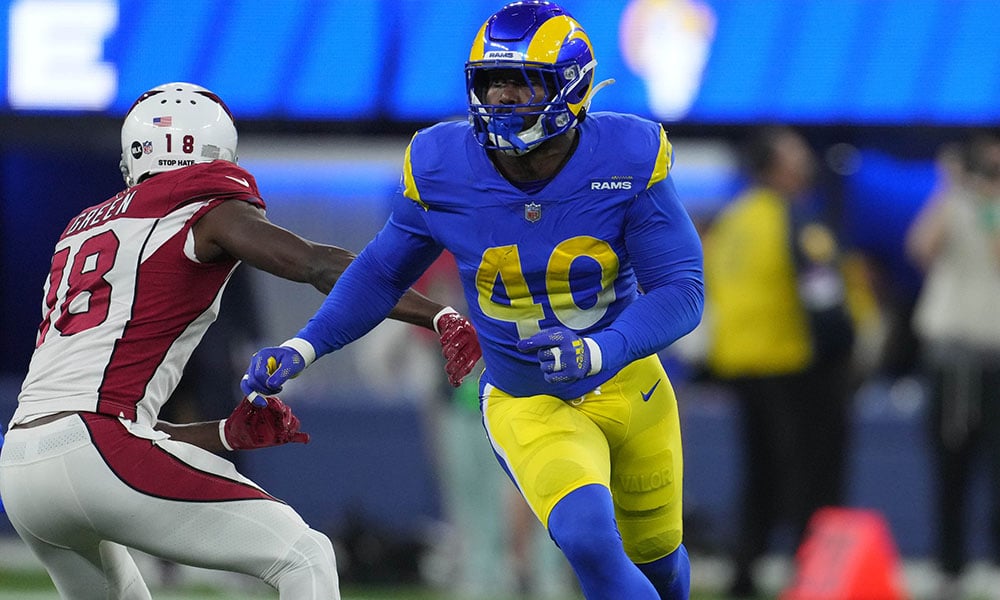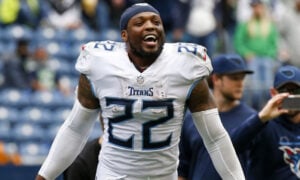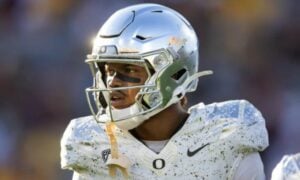A Fresh Look at True Position in IDP Leagues

In fantasy football, some sort of positional allocation is inevitable. We play teams against each other, and those teams have rules to make sure we’re rolling out comparable lineups of players.
This seemed simple for a long time. The number of players who were grey areas was pretty small. Kordell Stewart says hi.
With modern trends, data, and analysis, it got way more so. Tailbacks would line up as receivers. Tight ends would play in the slot. Backup quarterbacks would be listed as tight ends.
With defensive players added to the overall fantasy mix, it started to get even more complex. It absolutely did not help that defensive positions are all so subjective. There are no official definitions, only consensus. And it turns out there is actually very little consensus. What some of us see (or read about) is not the same as what the next person sees. And therefore, it’s created enormous schisms in IDP for years.
In recent years, a solution has started to arise though: True Position. Today we’ll recap what that is, why it’s a good idea and how it can change your fantasy experience for the better.
Why True position?
The purpose of positional designations in fantasy football (or even having them in the first place) is so that we can compare players who have a similar role on the field. It’s no more complicated at its heart. Unfortunately, football has many archaic conventions and assumptions that get in the way of that.
The most obvious one of those for us is the difference between a Defensive End (DE) and an Outside Linebacker (OLB). In bygone eras, teams would line up with three or four linebackers all in a similar, two-point stance and those guys would all play in a similar way. They’d all be asked to perform roughly the same combination of coverage, blitzing, and run defense snaps. So, they were all lumped together.
In modern football this has changed. Football is a game of strategy and counter-strategy so it’s a more fluid sport than most. Over time, defensive fronts have changed. Every team in the NFL asks their edge players to play in a very different way to their off-ball linebackers. Whether they’re in a two-point stance, or they have their hand in the dirt is immaterial.
The following chart shows the splits from 2021 defenses for interior linemen (i.e., 4-3 defensive tackles and all 3-4 linemen), edge players (4-3 DEs and 3-4 OLBs) and orthodox linebackers.

You’ll immediately notice that they all look the same. NFL defenses are no longer primarily differentiated by which front they use.
Yes, it’s true that for so-called 3-4 teams (precisely one team in the past two seasons has used odd fronts more than even fronts), the edge players drop more into coverage. But it’s seven percent instead of three percent. The pertinent bit of information is that for both categories append over 90% of their time not in coverage.
Suffice to say that regardless of scheme, when looking to group players the old 3-4/4-3 designations are simply no longer fit for purpose.
So, what is True Position?
Simply put, it’s ignoring old scheme designations as positional tools and grouping together similar players with similar roles.
In practice that means that all edge players (regardless of their stance) are one position, all interior linemen (basically anyone who mostly lines up on the line of scrimmage, inside the offensive tackle) are another, and all orthodox linebackers are a third. This keeps everything much cleaner and eliminates much of the cheesy, nitpicking search for bad designations on fantasy platforms.
Impact on personnel scarcity and availability
Before we get onto what it changes, we must acknowledge a strange truth: starting requirements in IDP leagues are often pretty poor.
In shallower IDP leagues (with fewer than 11 defensive starters), there’s a glut of available players.
In deeper leagues (11 or more weekly starters), requirements are often outdated. Three linebackers is a common setting. Two corners and two safeties is a very common one. Just one interior lineman is too. This is not how NFL defenses line up anymore. So, any argument revolving around “we want our league to be realistic” is a poor one.
True Position has three fundamental effects:
- Linebacker becomes much scarcer with edge OLBs removed from the pool. At best it leaves around 64 players per week, and the clear trend towards single-LB packages in the NFL means that it’s actually much lower.
- Interior line (DT) becomes much deeper with lots of impact players such as Cameron Heyward and Jeffery Simmons suddenly becoming available. It’s no longer a throwaway position with only a couple of players you can trust.
- Edge (DE) does not become deeper or shallower – but it changes. Some players move into the pool, and some move out of it. No longer are OLBs such as Von Miller or Khalil Mack non-viable players, but those interior linemen are now not there.
Effect on starting lineup requirements
True Position is fundamentally built on real NFL player usage. So, it reflects real NFL trends. This means that fantasy leagues will need to start more interior linemen, and fewer linebackers to be realistic. And if you don’t make those changes, you can expect to encounter dodgy economies of availability.
There are only circa 30 full-time linebackers on a weekly basis in today’s NFL. So, if your 12-team league requires three starting LBs each week you are forcing some teams to start part-time players.
Rotation is more common on the defensive line, and there are many more edge and interior linemen to play a significant, weekly role. In the same 12-team league starting two edges and one interior lineman is not enough to avoid both positions being gluts. And that’s not fun in fantasy football.
How do you make this change?
Sadly, True Position has not been adopted by fantasy platforms, although rumors abound that one or two may be doing so this off-season. For now it’s a manual process and you’ll need to make certain that your league understands exactly what it entails.
Fortunately, DLF’s very own Adam Tzikas has built a tool for leagues on MyFantasyLeague which you can use to make this change for you. You can find it here: True Position MFL Tool
Problems with True Position
True Position is a big improvement on baseline positional settings but there will always be grey areas. Defensive positions are subjective, so some players will be on the line. Some players like Kyle Van Noy, Isaiah Simmons and Micah Parsons split time between LB and the edge. Some players such as Chris Jones or Arik Armstead switched position mid-season which generate confusion. There are many other examples. True Position certainly helps – but it also highlights some other issues. So, your league will need to understand this.
True Position is also not possible on some platforms. Sleeper and others simply do not offer the level of customizability and control that you need. I advise you to keep lobbying them to update their offering.
In conclusion
If you’ve ever been frustrated or annoyed at a bad example of a player with a puzzling positional allocation, or a scoring system that kills the value of good players, then True Position might be for you. It’s certainly worth you experimenting with it and seeing how it helps you.
It’s not a silver bullet, and all the other IDP settings debates (i.e., best ball, roster size, scoring balance, etc.) can be combined with it to give you the experience you desire. But for years, the biggest single IDP problem has been edge designations, and this solves that in one fell swoop.
Good luck with your experiments.
- Ten IDP Fantasy Football Stats You Need to Know after Week 16 - December 29, 2023
- Ten IDP Fantasy Football Stats You Need to Know after Week 15 - December 22, 2023
- Ten IDP Fantasy Football Stats You Need to Know after Week 14 - December 14, 2023


































































